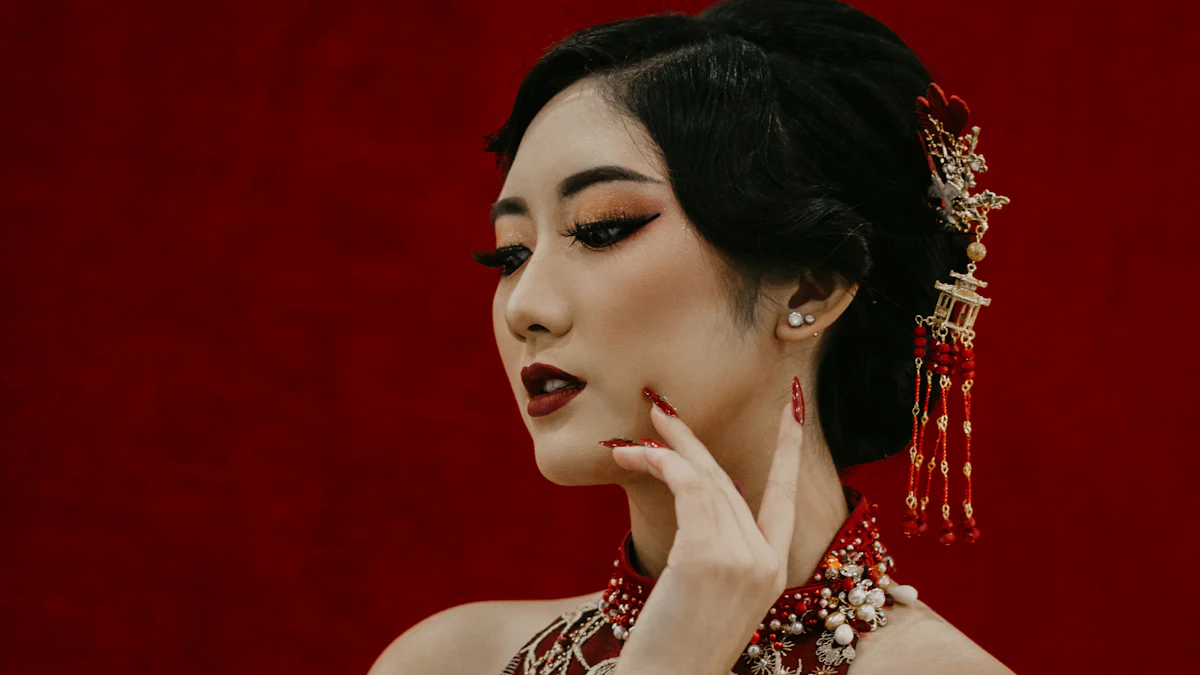 The cheongsam and ao dai are quintessential representations of Chinese and Vietnamese cultures, embodying centuries of tradition and elegance. These traditional dresses hold a significant place in the hearts of the people, symbolizing heritage and identity. This blog aims to delve into the intricate details of these iconic garments, unraveling their unique characteristics and cultural importance. By comparing and contrasting the cheongsam and ao dai, we can appreciate the artistry and craftsmanship that define these timeless pieces of Chinese traditional clothing cheongsam.
The cheongsam and ao dai are quintessential representations of Chinese and Vietnamese cultures, embodying centuries of tradition and elegance. These traditional dresses hold a significant place in the hearts of the people, symbolizing heritage and identity. This blog aims to delve into the intricate details of these iconic garments, unraveling their unique characteristics and cultural importance. By comparing and contrasting the cheongsam and ao dai, we can appreciate the artistry and craftsmanship that define these timeless pieces of Chinese traditional clothing cheongsam.
Origins and History
The cheongsam has a rich history that traces back to the Qing Dynasty, where it first emerged as a traditional attire. During this period, the dress underwent various transformations, eventually evolving into the elegant garment known today. In the 1920s Shanghai era, the cheongsam experienced a significant shift influenced by Western fashion trends, blending traditional elements with modern styles.
Contrastingly, the ao dai has its roots deeply embedded in Vietnamese culture, reflecting the nation’s heritage and customs. Its historical background is steeped in tradition, symbolizing grace and sophistication. Over time, the ao dai has adapted to contemporary preferences while preserving its intrinsic cultural value.
Vietnamese women have long adorned themselves in the exquisite ao dai, showcasing its cultural significance on diverse occasions. The dress embodies elegance and refinement, making it a staple in Vietnamese fashion. Today, modern adaptations of the ao dai continue to captivate audiences worldwide with their timeless allure.
Design and Style
Cheongsam’s Features
The Cheongsam, also known as Qipao, showcases a form-fitting silhouette that accentuates the wearer’s figure with grace. Crafted from luxurious silk or satin, this traditional dress exudes elegance and sophistication. Adorned with intricate embroidery and patterns, such as floral designs or scenes from nature, the Cheongsam captivates onlookers with its artistic flair.
Ao Dai’s Characteristics
The Ao Dai Vietnam is renowned for its flowing structure that drapes beautifully along the body, creating a sense of movement and fluidity. The dress harmoniously blends tradition with modernity, featuring a variety of fabrics in vibrant colors. From soft pastels to bold hues, the Ao Dai reflects Vietnamese culture through its diverse color palette.
Comparison of Styles
When comparing the Cheongsam and Ao Dai, both dresses share a common thread of cultural significance and timeless appeal. While the Cheongsam emphasizes a fitted silhouette, the Ao Dai prioritizes flow and movement. The intricate embroidery on the Cheongsam contrasts with the vibrant colors of the Ao Dai, showcasing the unique design elements of each dress.
Cultural Significance
Cheongsam in Chinese Culture
Symbolism and occasions
The Cheongsam holds a special place in Chinese culture, symbolizing grace, elegance, and tradition. Worn during significant events such as weddings, banquets, and formal gatherings, the Cheongsam embodies the essence of femininity and sophistication. Its intricate designs and vibrant colors reflect the wearer’s status and personality, making it a timeless choice for Chinese women seeking to showcase their cultural heritage.
Modern relevance
In contemporary society, the Cheongsam continues to captivate fashion enthusiasts worldwide with its fusion of tradition and modernity. Renowned designers often draw inspiration from the classic silhouette of the Cheongsam, incorporating elements into their collections. Chinese women wearing this iconic dress exude confidence and style, embracing their roots while embracing global fashion trends.
Ao Dai in Vietnamese Culture
Symbolism and occasions
The Ao Dai Vietnam epitomizes the essence of Vietnamese identity, representing beauty, grace, and resilience. Worn during ceremonies, festivals, and special events, the Ao Dai symbolizes cultural pride and heritage. Its flowing design symbolizes harmony between individuals and nature, reflecting the deep-rooted values of Vietnamese society.
Modern relevance
Despite evolving fashion trends, the Ao Dai Vietnam remains a symbol of national pride for Vietnamese people around the world. Celebrated for its elegance and simplicity, this traditional attire continues to inspire contemporary fashion designers seeking to infuse traditional elements into modern styles. The global influence of the Ao Dai showcases Vietnam’s rich cultural tapestry on international runways.
chinese traditional clothing cheongsam
Global influence
The allure of the cheongsam extends beyond China’s borders, captivating audiences worldwide with its timeless charm. From Hollywood red carpets to prestigious fashion shows in Paris, the cheongsam has made its mark on global fashion stages. Its unique blend of tradition and innovation resonates with fashion enthusiasts seeking to embrace diverse cultural influences.
Fashion trends
As a symbol of elegance and sophistication,chinese traditional clothing cheongsam continues to inspire contemporary fashion trends across various cultures. Designers often reinterpret elements of the classic dress into modern silhouettes that appeal to a global audience. The enduring popularity of the cheongsam reflects its versatility as a cultural icon that transcends time and borders.
In the realm of fashion, the cheongsam and ao dai stand as timeless symbols of cultural heritage and elegance. Both dresses have seamlessly blended traditional customs with modern trends, captivating audiences worldwide. The enduring allure of the cheongsam lies in its intricate embroidery and graceful silhouette, reflecting the grace and femininity of Chinese culture. Similarly, the ao dai continues to evolve, embodying Vietnamese identity with its flowing design and vibrant colors. As these traditional dresses transcend borders, they pave the way for a future where heritage meets innovation on the global runway.






